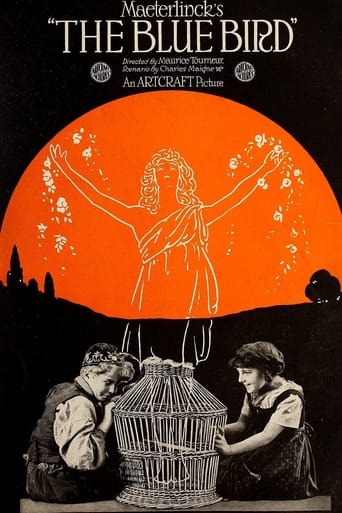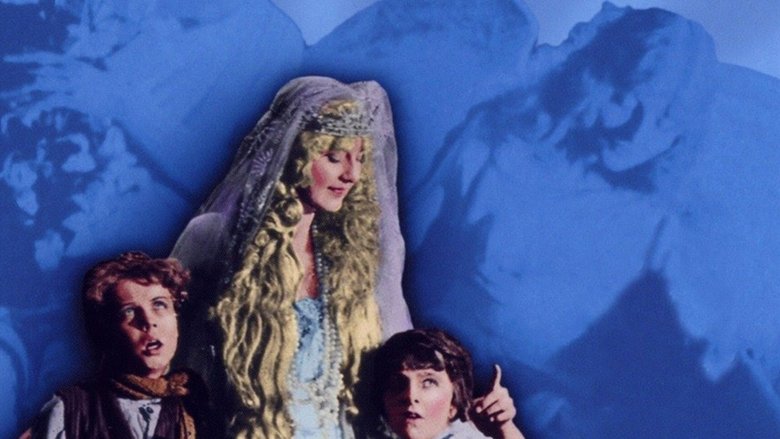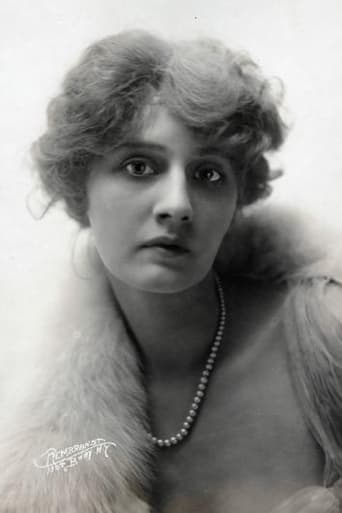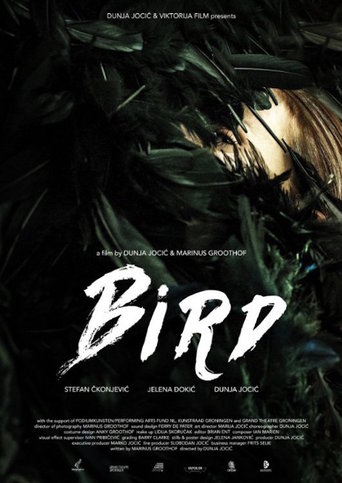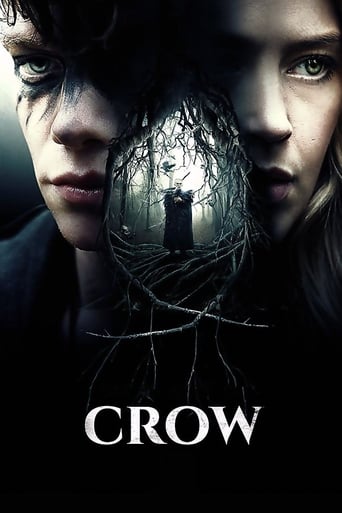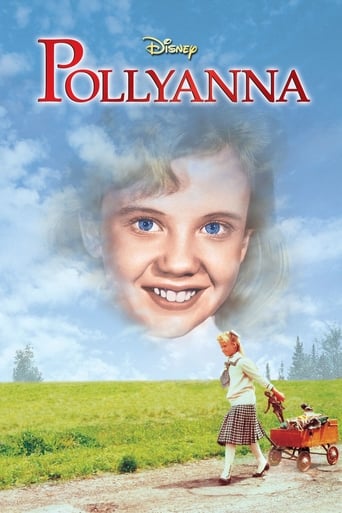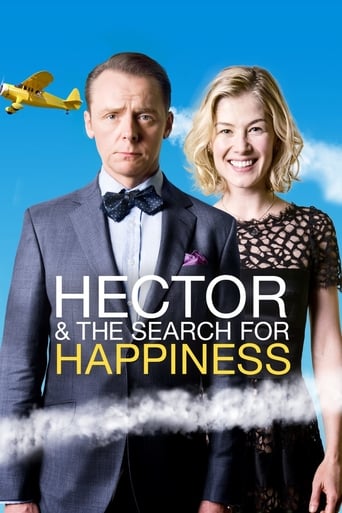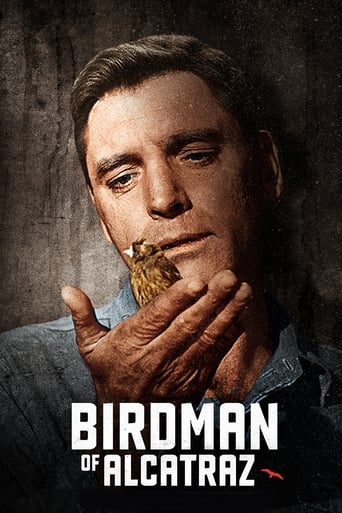The Blue Bird (1918)
Two peasant children, Mytyl and Tyltyl, are led by Berylune, a fairy, to search for the Blue Bird of Happiness. Berylune gives Tyltyl a cap with a diamond setting, and when Tyltyl turns the diamond, the children become aware of and conversant with the souls of a Dog and Cat, as well as of Fire, Water, Bread, Light, and other presumably inanimate things. The troupe thus sets off to find the elusive Blue Bird of Happiness.
Watch Trailer
Cast


Similar titles
Reviews
Very well executed
Ok... Let's be honest. It cannot be the best movie but is quite enjoyable. The movie has the potential to develop a great plot for future movies
I enjoyed watching this film and would recommend other to give it a try , (as I am) but this movie, although enjoyable to watch due to the better than average acting fails to add anything new to its storyline that is all too familiar to these types of movies.
Let me be very fair here, this is not the best movie in my opinion. But, this movie is fun, it has purpose and is very enjoyable to watch.
The Blue Bird, an American silent fantasy film based on a play of the same name by Maurice Maeterlinck, in many ways can and will be compared to the much more renowned and known 1939 classic Wizard of Oz. From animals given the forms of humans, to the whimsical, otherworldly sets and surreal, almost poetic narrative, the film certainly doesn't lack imagination. However, while this at times can work to the film's benefit, Maurice Tourneur at times seems to get a little carried away with his imagery and forgets to keep the story moving along. There's an extended stretch somewhere between the half- way point and final five minutes where the film indulges in its sense of whimsy and fantasy to the detriment of the story's central plot line. Sure, it's more of a moralistic play than an A-to-B-to-C kind of story, I can see that clearly and Tourneur certainly plays to his strengths as an artist first. What lets the work down though is that the end result resembles a half-baked pastiche of ideas and themes rather than single, always-moving, cohesive film. This is where the resemblance to the 1939 classic stops. It may be as visually impressive (for its much earlier time), but what is lacks is a gripping and compelling story. It's fine, sure, but at the same time lacks any real punch or lasting, memorable moments.
I found this 1918 version of "The Blue Bird" by accident. The film was based on the show by Maurice Maeterlinck, originally titled "L'Oiseau Bleu", and apparently had success on Broadway.This silent movie was directed by Maurice Tourneur. The story springboards in the manner of Bunyan's pilgrim's progress as the "similitude of a dream." The shots, employing the rigid camera technique of the day, resemble illustrations in children's books from the era and remain quite beautiful over the course of various monochrome tintings.So far so good, because this is a ...strange, strange story. The premise for the children's dream is that with help from the Blue Bird of Happiness we can see beyond the apparent nature of the perceived world of material objects and somehow grasp the spiritual essence of the merest of mere things. We will then stop coveting wealth, fame, and power, and discover contentment with the joys of (our existing) home and hearth.Confined to a verbal description the premise seems more than a little banal, yet on film the concept allows Tourner-Maeterlinck to birth some of the oddest roles in movie history: e.g., check out Charles Craig as Sugar (yes, the real thing) and Sammy Blum as Bread (ditto). I don't know how "method" acting figures in all of this, but the result seems to be an attempted demonstration of Spinoza's view that apparently inert matter is somehow ensouled. Then again, encountering Bread and Sugar as just guys is less surprising after years watching all the animation of the inanimate in television commercials. For good measure the children's dream grants the household pets human speech and personality, revealing the pets' canine and feline characters as noble and sinister, respectively. That for me was about the only unoriginal thing in this one-of-a-kind viewing experience.If only Maeterlinck could have tried out his idea in the Sixties, maybe with Timothy Leary as technical adviser... But I digress.The two child leads, the characters named Mytyl and Tyltyl (easy to type on the script?), are effectively, if naively, portrayed. I also remember enjoying the choreographed sequence introducing the "fire" character. And the artistically accomplished use of silhouettes in place of live actors to present a party sequence deepens the credibility of a filmed dream.The music-only soundtrack on the version I saw was marred by a flutter so bad I simply turned off the sound and missed nothing. Aside from a few brief rough patches in the images the print I saw was gorgeous. Based on the frequent use of tinting to signal mood changes I would even call this black and white movie colorful.Theatrical adaptations of Baum's "Oz" books were running at about this time (a young Ray Bolger saw one, forming a resolution achieved years later as an adult), along with Barrie's "Peter Pan". In spite of its age you can see ingredients that would later appear in the 1939 production of "The Wizard of Oz". The Blue Bird tale was remade in the sound era in 1940 starring Shirley Temple. Intended to rival MGM's "Oz", it flopped. Another try occurred in 1976 as a U.S. - U.S.S.R. exercise in détente. Maybe Soviet censors saw the lively menagerie of physical things noted above as a creative application of the Marxian principle of "materialism".
I realize that this film has been remade several times, but there is no way I'll see any of the remakes after seeing this 1918 version. While some might find it charming or perhaps a classic, I just felt it was creepy and bizarre--sort of like morphing classical mythology with a fairy tale and "The Wizard of Oz" AND copious amounts of LSD! The film is an allegorical tale about a couple of children who, with the help of a fairy and some ultra-weird new friends, go searching for the Blue Bird of Happiness. As for the friends, the fairy gives them a magic hat with which they can unlock the souls from a variety of objects and animals. With the hat, they are able to make their dog and cat look a lot like people and talk. But, it's even weirder when they unlock the souls within fire, water and bread(????). This motley crew goes from one odd vignette to another. But, by far, the creepiest and most disturbing is visiting dead Grandpa and Grandma and all the many little babies that had apparently died that would have been their brothers and sisters!! Who thinks of this stuff?! Most people wouldn't--provided they weren't off their meds!! Apart from a creepy and incomprehensible story, the film does have a few things going for it--but only a few. The cinematography and sets, for 1918, were awfully impressive. Aside from that, I can't see much reason to watch this god-awful movie.UPDATE: Despite my pledge, I have since seen two other versions--films that were as bad or worse than this one! The problem, no matter how impressive the cast or sets is the story--one that is just bonkers and non-entertaining to say the least.
It's a pity that the 1918 version of "The Blue Bird" suffers so much from nitrate decomposition. Were it not for that I would give it a full 10 points. Nonetheless, what we have is sufficient to give great pleasure and it is certainly far superior to the 1940 version with Shirley Temple.Some of the scenes have a rather staged look but, even so, one admires the beautiful—often elegant—artistic consciousness in their presentation. This is particularly true of the backdrops. Generally, I thought the restoration was pretty good with effective use of tinting to make the most of the emotional atmosphere of the various sequences.I liked the presentation of the message—always an important factor in a fairy tale. The quest for happiness which is always found to be closer than we expect, the discovery of joy in the joy of others, the beautiful and wonderful intangible world of the imagination and the truth of dream—all these are beautifully presented through the innocence of the children. And here one must admire the performances of little Tula Belle as Mytyl and Robin Macdougall as Mytyl's older brother, Tyltyl. Tula, particularly, has an engaging naturalness which is wonderful. Dog and Cat look forward to "The Wizard of Oz" and the actors certainly convey the habits of the creatures they portray.The allegory with its spiritual message was reminiscent of the Narnian series of C.S. Lewis and the way the point was driven home at the end was very effective. Finally, I think that the music score showed excellent taste and skill in the way it was wedded to the film.The Blue Bird is a beautiful film with a universal message.

